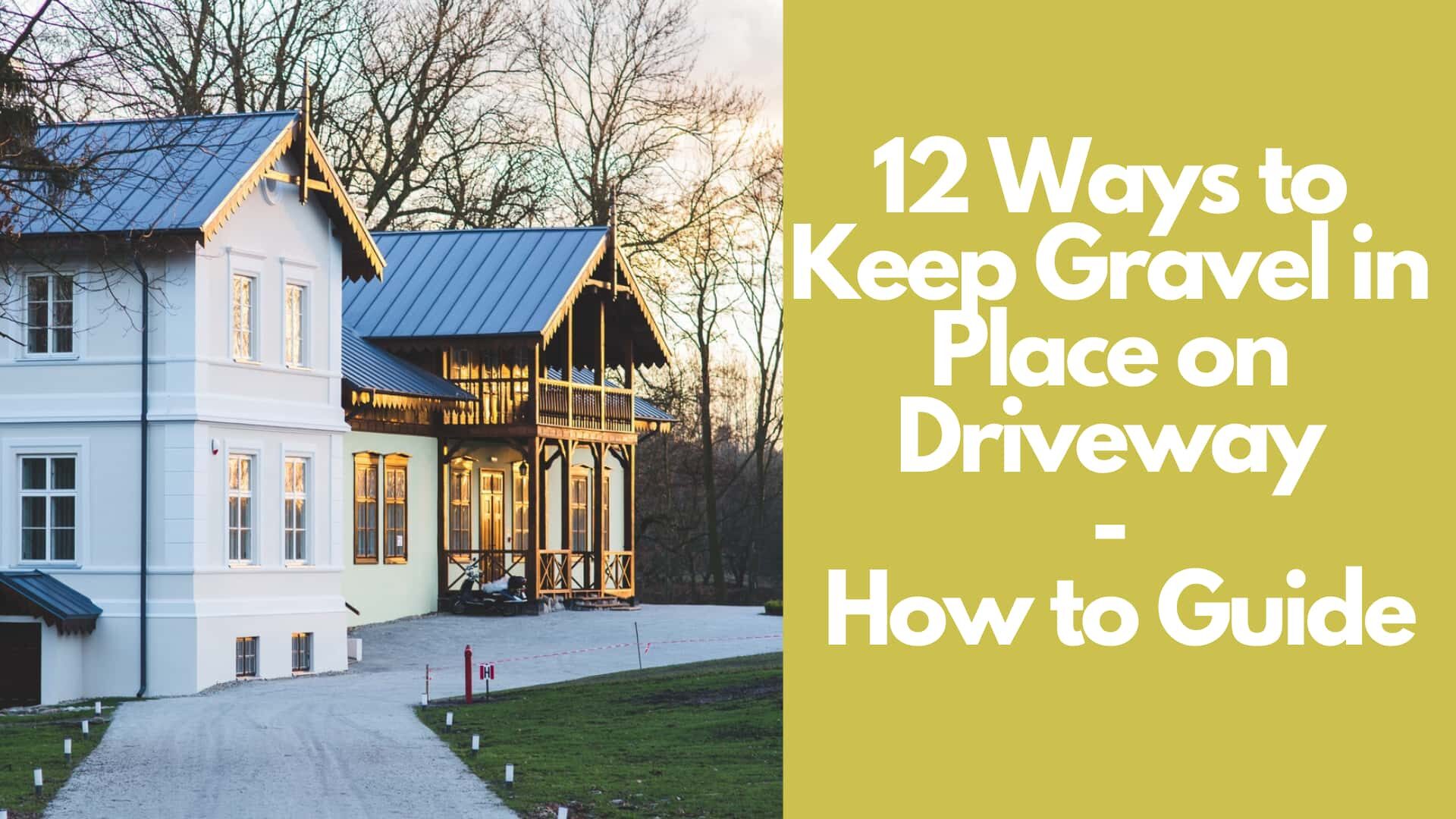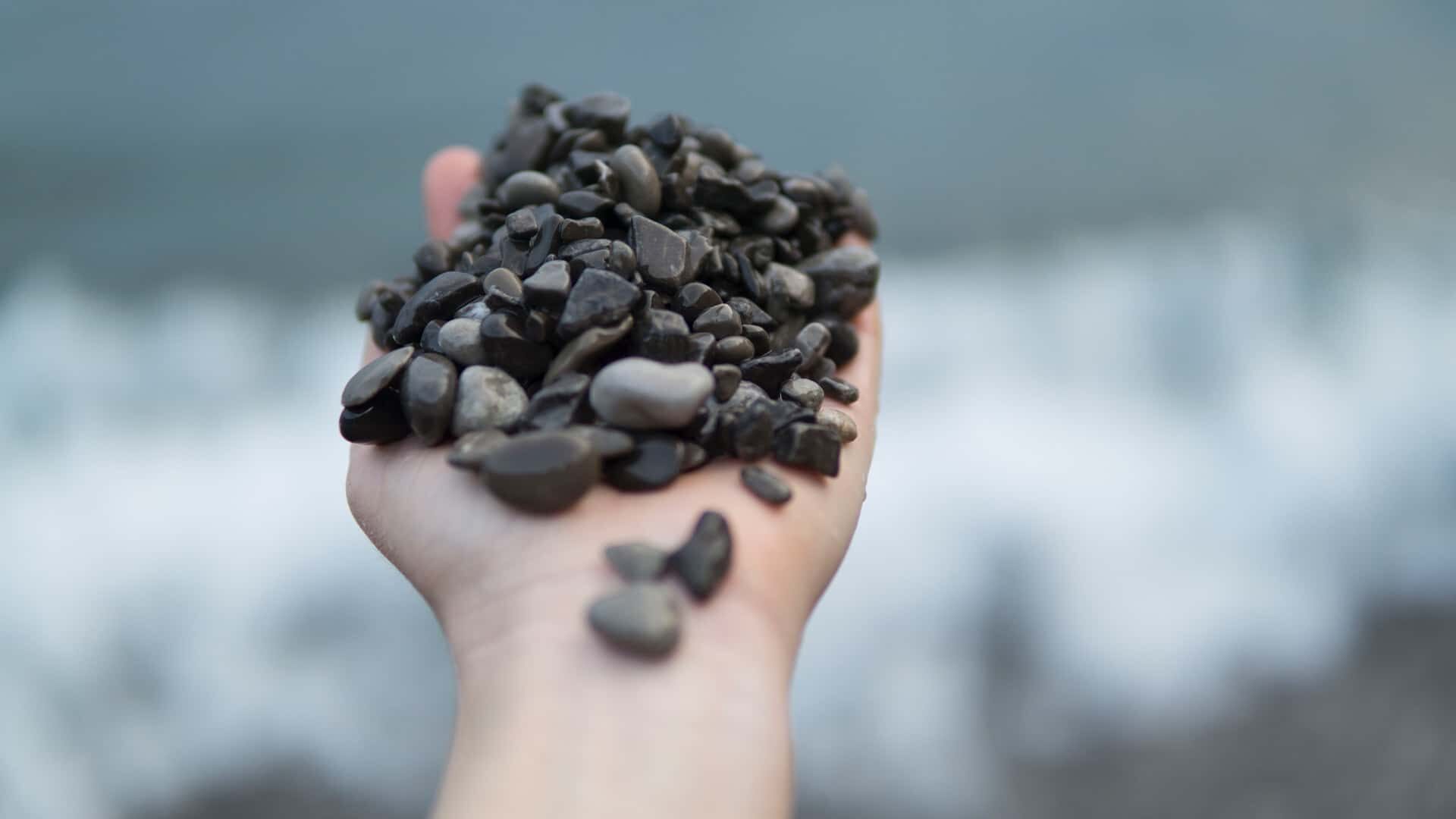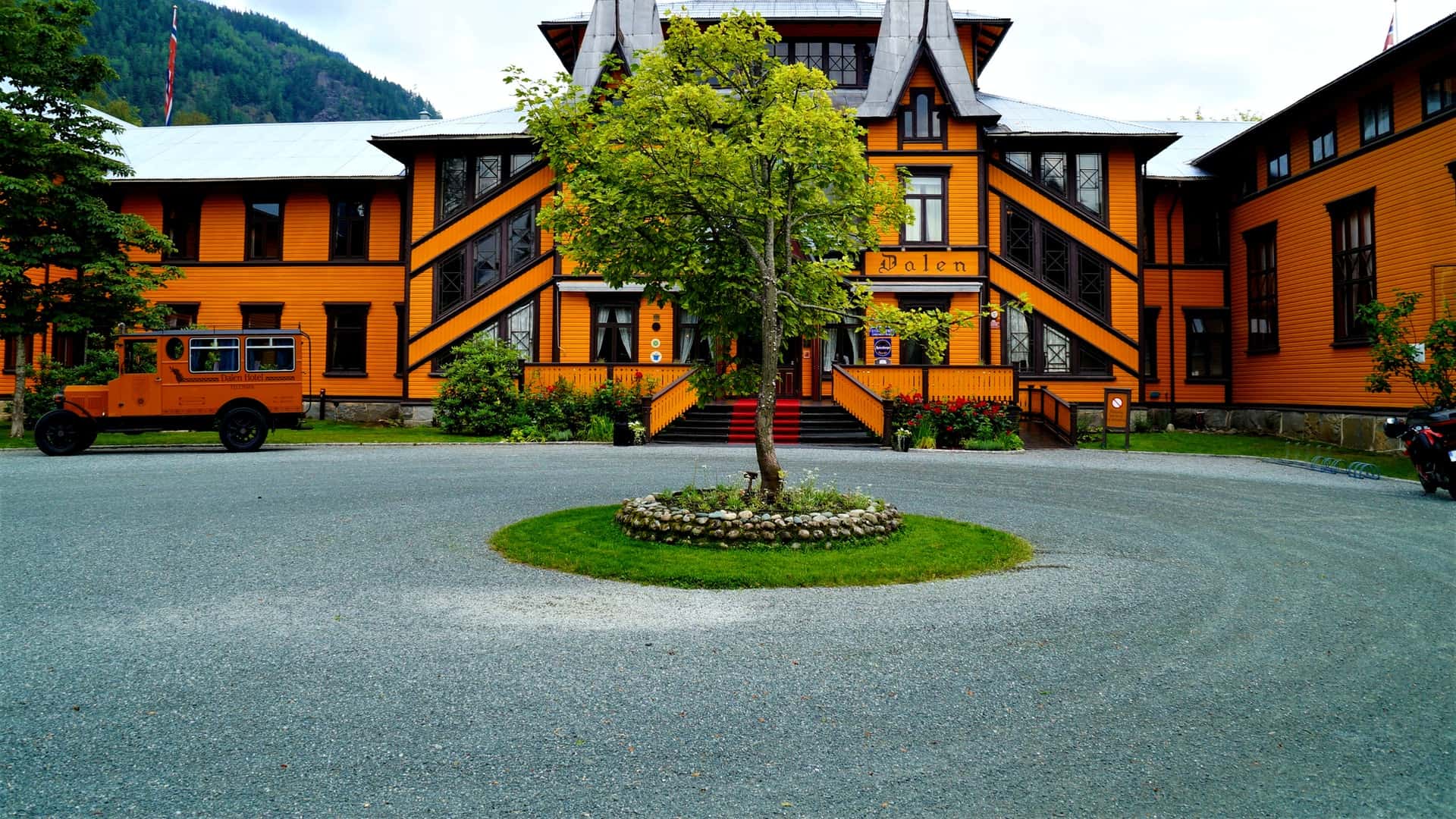Learn how to keep gravel in place on driveways with 12 proven methods. Guests will notice your driveway as one of your home’s first aesthetic features. There are numerous approaches to constructing a driveway. You may have a lot of fun and save money by installing your own gravel driveway to enhance the appearance of your property.
It’s easy to see how a gravel driveway may greatly enhance the curb appeal of your property. Gravel is made from a range of loose and crushed decorative stones, allowing you to effortlessly customize the look and feel of a new gravel driveway.
Decorative edging, walkways, rockeries, and gardens can all benefit from the versatility of gravel as a surface material. Gravel driveways are a popular choice because of their many advantages.
However, everyone who has a gravel driveway or path knows that the main drawback of utilizing unstabilized gravel as a paving material is that it spreads and travels around. In general, it is not difficult to maintain a gravel driveway with some careful planning and attention to detail. By reading this guide, you will be able to know, How to Keep Gravel in Place on Driveways: 12 Proven Ways.

What are the ways to keep gravel in place on the driveway?
If you have gravels, there are a variety of options available to you. Keeping gravel in place on driveways is an important consideration if you want to keep them in good condition. Here are 12 different ways to keep gravel in place on the driveway of your garden.
1. Crown gravels on the driveway.
Gravel should not be laid out in a straight line from one end to the other while installing it. There is an increased risk of gravel slipping down the hill because of this. It’s preferable to make the driveway more steeply sloped from the center. This “crown” will keep your gravel dry and in place by acting as a rainwater deflector.
How to crown gravel on the driveway?
To create the desired crown height, use a metal rake to spread the gravel out from side to side. Level the gravel on both sides of the driveway so that it softly slopes down to the margins of both driveways. A driveway with a rock-lined drainage ditch surrounded by a crown.
2. Use right gravels.
It should come as no surprise to anyone that gravel choice plays a factor in the ease of keeping items in place.
How to choose the right gravels?
Be sure to consider your home’s overall color scheme while deciding on a gravel color before making a final decision. There is less chance of larger stones moving. Talk to a gravel provider to obtain the best gravel for your project.
3. Tamping and packing.
The simple act of tamping and packing the gravel can assist keep it from spreading.
How to tamp and pack the gravels on the driveway?
A hoe or other tool is used to compact the gravel, and then water is sprayed on top. Adding water will loosen the soil below and help the gravel shift and settle into place more easily.
Be careful not to overwater your driveway, as this will only cause it to run even more and result in more spreading. You don’t want it to be dirty and you want it to be moist.
4. Driveway edging.
The use of borders can also help to avoid gravel from spreading. It is not an essential one but when keeping in place gravels on the driveway, the gravel will be contained by these lines.
How to edge gravel driveway?
If you want to add a decorative border to your driveways, you can use wood planks, brick pavers, or another long-lasting material. The choice of materials for the border is entirely up to the homeowner and their personal preferences.
For the driveway to not shift outward, all that is required is that the borders be sturdy enough to prevent them from doing so. Driveways that can be readily framed and are straight are ideal candidates for this strategy. It’s more difficult to use this method on curved driveways, but it can still work if you have the right border material.
5. Create drainage system.
Gravel slides or forms deep ruts when it’s washed away or flooded, thus appropriate drainage is essential. A driveway or path made of dry gravel is significantly more stable.
How to create a drainage system?
In order to prevent water from flowing over the top of your gravel path, consider installing concrete culverts beneath it. Drainage trenches can be dug along existing gravel walks and roads to keep them dry and prevent water damage.
6. Use permeable plastic grid pavers.
Plastic permeable pavers are the most cost-effective, durable, highly efficient, and low-maintenance method of preventing gravel from spreading. The gravel is held in place by the borders. In fact, even when the gravel is within the paver’s borders, it is kept in place by the grid-like cells that make up the pavers themselves.
Paver installation is straightforward and can finish in less than a day with only the most basic tools.
Your driveways will never shift or spread again after the top layer of gravel has been compacted into the pavers. Once your gravel driveways are completed, they will require little to no upkeep.
7. Compact the driveway.
To build a sturdy driveway, start with a well-prepared gravel layer. The layers beneath the topmost layer of gravel give the majority of stability and support. Apply a 3-inch layer of gravel to the compacted sub-grade. Also, compact this layer.
How to compact the gravels on the driveway?
The driveway gravel should be compacted into place using a roller attachment. If you don’t have a roller, drive over the driveway several times with a big vehicle to compact the rock.
8. Driveway grading.
Starting with correct grading can ensure that your gravel driveway lasts. When it comes to gravel driveways, it’s possible you’re installing a new one or fixing one that has already paid for itself. Regardless of how it’s graded and leveled, this will avoid any problems from developing in the future.
If you totally flatten your gravel driveway’s base layer, you may experience water pooling issues in the future.
How to grade gravel driveway?
Grade the driveway so that it has a crown, and then feather the gravel out to the driveway’s edges, away from your house or garage.
9. Increase the depth of driveway.
Maintaining a reasonable depth of gravel in a gravel driveway is an easy technique to keep the gravel from washing away.
Increasing the depth of your driveway may in reality be the simplest and most cost-effective method of protecting your gravel from washing away. Gravel that has been put too thinly in driveways tends to move around.
How deep should gravel be for the driveway?
Without borders or pavers, the top layer will spread a little, but laying at least 3 inches of gravel will help compact and bury it into the ground. Make sure you don’t go any deeper than 3 inches or the gravel will get loose and spread out.
However, it’s important not to overload a road with gravel, since this might cause the stone to rattle and spread out, resulting in an inadvertent widening of the driveway.
10. Ensure thick layer of gravel.
With a thick layer of gravel, it’s astonishing how quickly your driveway can be compacted. At least 3 inches of the stuff must be piled high on top for it to actually compact beneath it.
11. Check for potholes and ruts.
Drainage issues can be exacerbated and your car and driveway can be negatively affected by potholes and ruts on the road.
How to avoid from potholes and ruts?
Replacing any missing gravel and raking it back to its original level is the recommended course of action.
12. Place a layer of landscaping fabric.
Consider adding a fresh top layer of gravel to an older gravel driveway that has a lot of minor ruts and holes. Be sure to apply landscaping fabric behind the new layer first.
Cutting landscape fabric to fit your driveway is simple. And cutting the grass and weeds under the stone and gravel prevents them from growing.
How to reduce the dust in the gravel driveway?

Many homeowners prefer gravel driveways, but as time passes, the dust that accumulates on them becomes unbearable. Here are solutions for reducing the amount of dust that comes from a gravel driveway.
1. Use salt.
One of the best ways to reduce the amount of gravel driveway dust is to use salt. In terms of dust control on unpaved driveways, Lignin Sulfonate and Calcium Chloride are two of the most popular compounds.
They do this by absorbing water from the air and keeping the top layer of soil moist enough to prevent it from becoming dust. But, they raise environmental issues.
2. Reduce the vehicle speed.
This is the simplest approach to use. To reduce the amount of dust that is generated by cars, lower the speed limit.
3. Lay down a new top layer.
More gravel on the driveway may help to reduce the amount of dust that is emitted. Adding a new layer of gravel to your driveway can help lessen the amount of gravel erosion, which eventually results in the dust.
4. Use fences.
In the event of a storm or high winds, board fencing is a great windbreaker for your home. You may prevent dust from spreading throughout your yard by enclosing the space surrounding your driveway with a fence.
5. Regular maintenance.
Regular raking and grading are necessary to keep a gravel driveway looking smooth and level. Once a year, grade the driveway with a tractor to ensure proper water drainage.
Make sure to fix tiny potholes before they grow into dust-wreaking divots. Gravel the bottom and middle of the hole with huge gravel, followed by medium-sized gravel, and finishing with smaller gravel that matches the rest of the driveway with smaller gravel
6. Make windbreaks.
Dust control can be greatly improved by reducing the amount of wind that blows dust onto the road. An excellent place to start is with windbreaks like hedges, plants, or berms.
7. Ensure a professional installation.
Consult a professional contractor to make sure the gravel is laid up correctly.
8. Spray water.
Spraying water on the dust is another option. Soil that is wetted down keeps it from being washed away in the wind. In humid places, this is an excellent dust palliative. However, in dry ones, it only lasts a short time.
Plain water or water mixed with another chemical adhesive or oil can be utilized in this method.
9. Use permeable pavers.
An expensive, yet long-lasting remedy to gravel dust is permeable pavers. In order to prevent the accumulation of dust, permeable materials are the best option because they allow water to evaporate and dry. Pavers are also eco-friendly, minimizing the amount of dust in the air.
10. Use soybean oil soapstocks.
Soybean oil’s byproduct, this chemical can be sprayed on the driveway to keep dust at bay. There are no harmful effects on the environment or animals because it is environmentally friendly.
How to maintain your gravel driveway?
It’s easy to keep your gravel driveway looking nice and clean. A well-maintained gravel driveway can last for many years and save money in the long run.
- To keep your gravel driveway free of leaves and twigs throughout the fall season, rake it at least twice a year. In addition, this will aid to loosen out any hardened gravel.
- Despite the presence of a weed protection membrane, seeds blown in by the wind can still induce weed growth. Using gardening gloves, just remove these by hand. Spray weed killer on the damaged areas.
- Using a tractor equipped with a grading blade, return gravel from the driveway’s edges to the center once or twice a year to keep the crown fresh.
- When it snows, it is common practice to clear driveways of snow to prevent vehicles from losing grip. A full inch of snow can be left on your gravel driveway without compromising traction or the safety of your vehicle. This will save you from having to remove gravel from your driveway with snow shovels or plows, thereby preserving as much of the driveway’s gravel as possible.
7 Best kinds of gravels for driveway
Here are the 7 best kinds of gravels for your driveway. Use those as your preference and make the home garden eye-catching.
1. White Marble Chips
In gravel roads and walkways, they are typically utilized as the top layer of gravel. They’re more appealing since they’re not completely white, instead, they have gray streaks throughout. They appear elegant and beautiful because of the sputtering effect. In addition, it aids in cooling the property.
2. Stone Dust
Whether used alone or in combination with larger stones, it’s a versatile agate. When used on its alone, it creates a durable, water-resistant finish. It is a great binding agent when it is paired with larger stones.
It’s common for gravel driveways to be topped with a coating of stone dust and other stones. Stone dust has the advantage of preventing weeds and mold from forming on your driveway.
3. Crushed stones
Driveways can be made from a variety of crushed stone types and colors and sizes. Gravel driveways can benefit greatly from crushed stone, which is a versatile, long-lasting, and reasonably priced solution. For gravel driveways, this is the perfect material.
4. Quarry Process Stone
The top layer of a gravel driveway might benefit greatly from using this type of gravel, which is sturdy and long-lasting.
Make sure the middle of the driveway is taller than the sides if you use this type of gravel. The driveway would be less likely to be damaged if this structure was put in place.
5. Washed Clean Stone
The texture is similar to that of crushed stone. The only difference between it and crushed stone is that it’s cleaner, making it more visually appealing. It can be used as either the middle or top layer of the driveway, depending on the size of the area.
6. Pea Gravel
A gravel driveway’s top layer is created from this material, which consists of small, smooth stones.
As a result of its smoothness and visual appeal, it is popular with consumers. Pea gravel is available in a wide range of colors, including brown, grey, blue, and even reddish brown.
7. Jersey Shore Gravel
It resembles beach sand due to its composition of yellow, brown, gold, and white stones. Because of its visual appeal, it is a popular choice. A calming effect can be achieved by using this type of gravel in a garden.
Watch how to maintain gravel driveway and keep it free of weeds | Video
Top 5 FAQs & answers related to How to Keep Gravel in Place on Driveways: 12 Proven Ways
Is it possible to sprinkle cement on top of gravel?
Over an existing gravel driveway, a cement mix may work. It is possible to lay a concrete driveway on top of an existing gravel one, but it is normally discouraged.
Gravel that is meant for use beneath cement is often of a lower quality than that used for driveways.
How long does a gravel driveway last?
The durability of a gravel driveway depends on how well it is cared for. Gravel driveways can last for decades if they are properly maintained. Every two to four years, put a new layer of gravel into your driveway.
Does gravel driveway affect erosion?
It’s fairly uncommon for gravel driveways to be eroded over time because of the way water can wash away dirt. Fortunately, there are ways to avoid it.
Excavate rock-lined trenches on either side of a gravel driveway to protect it from the risks of erosion. Runoff water will be diverted from your driveway and your home by the trenches. Water damage is reduced as a result of this.
Can I paint the gravel driveway?
Gravel can be painted whatever color you like.
In the winter, how to maintain the gravel driveway?
Repair any potholes in your gravel driveway with new gravel before the winter arrives. Using a tractor’s grader blade attachment, rake the driveway to create a crown in the middle.
The height of the crown should be one inch for every three or four feet of driveway length. Add new material if necessary by using the tractor’s blade to rake gravel from the perimeter into the middle.
For the first two to four years, you’ll need to add new gravel. Make sure you have snow removal equipment, such as a snow blower or snow shovel, on hand for the next snowy season.
Conclusion
By reading this guide, I hope you got the full idea of How to Keep Gravel in Place on Driveways: 12 Proven Ways.
Please share this How to Keep Gravel in Place on Driveways: 12 Proven Ways with your friends and do a comment below about your feedback.
We will meet you on next article.
Until you can read, Why Are My Tomato Branches Curling Down: Guide with Reasons
